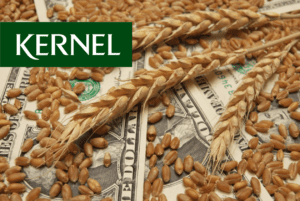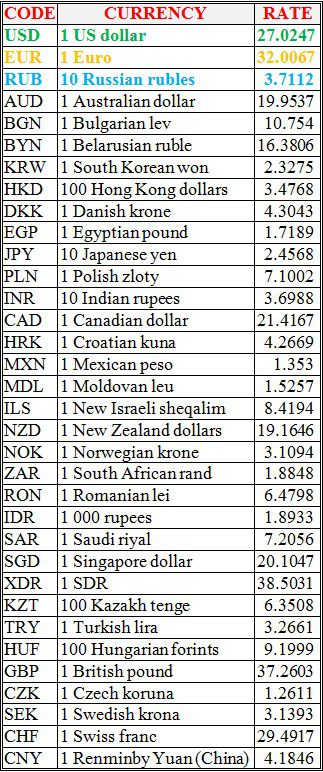
Finance Minister Serhiy Marchenko sees the potential to keep inflation within 10%.
“There are hopes that it will be possible to keep inflation within 10%, not exceeding 10%,” he said during the Ukrainian Financial Forum, organized by ICU.
According to the State Statistics Service, inflation in July 2021 in Ukraine increased to 10.2% in annual terms, while in June this figure was at the level of 9.5%. At the same time, the NBU expects that by the end of the third quarter, inflation will peak this year at 11.2%.
Commenting on deteriorating expectations of a number of investment banks regarding the growth of the Ukrainian economy, the minister noted that these forecasts are based on GDP growth in the second quarter compared to the same period last year.
“It is still difficult to estimate the end of the year, because main capital investments and expenditures are planned for the third or fourth quarter,” Marchenko said.
According to him, the situation will improve, as evidenced by the constant growth of retail turnover, as well as the growth potential of the construction industry.
“By the end of the year, we expect a stable situation both in public finances and in the economy, without sharp shocks. I think that we will have 4% of GDP growth this year,” Marchenko said.
FINANCE MINISTER, INFLATION, SERHIY MARCHENKO, UKRAINE'S INFLATION

The agricultural exporter Kernel-Trade and the company specializing in wholesale trade in metals and metal ores Polyus Trading topped the list of the largest recipients of budgetary value added tax (VAT) refunds in August with an indicator of over UAH 1 billion, according to data of the State Treasury Service.
According to them, Kernel-Trade received almost UAH 1.6 billion of VAT refunds last month, Polyus Trading – UAH 1.095 billion, while there is no information on the budgetary refund of this tax to these companies in July.
The top five largest recipients of budgetary VAT refunds in August were also two steel plants – Zaporizhstal – UAH 407 million (in July – UAH 282 million) and ArcelorMittal Kryvyi Rih – UAH 386 million (UAH 315 million), as well as the agricultural exporter ADM Ukraine – UAH 231 million (UAH 159 million), the State Treasury Service said.
The second top five in the list are opened by Poltava Mining and Processing Plant – UAH 182 million (UAH 187.3 million) and Pivdenny Mining and Processing Plant – UAH 170 million (there are no data on reimbursement in July).
The top ten are closed by Viterra Ukraine – UAH 163 million (UAH 194.7 million), Yeristovo Mining and Processing Plant that topped the July list – UAH 157 million (UAH 383 million), as well as AGT – UAH 144 million (UAH 306.2 million), according to the treasury data.
The third five largest recipients in August looked like this: Mykolaiv Alumina Plant – UAH 121 million (UAH 120 million), Nikopol Ferroalloy Plant – UAH 110 million (UAH 190.5 million), Optimusagro Trade – UAH 96 million (UAH 144 million), and Leoni Wiring Systems UA GMBH – UAH 94 million (UAH 200 million).
Two more companies received over UAH 90 million in VAT refunds in August: Nika-Agrotrade – UAH 91 million (UAH 143 million) and Mondelez Ukraine – UAH 90 million (UAH 45 million).
According to the State Treasury Service, in general, in August 2021, budgetary reimbursement decreased to UAH 10.78 billion compared to UAH 11.15 billion in July and UAH 11.99 billion in June.
VOLUME OF CONSTRUCTION PRODUCTS PRODUCED BY TYPE IN JAN-JUNE OF 2021 (MLN UAH)


Ukraine exported furniture worth $578.85 million in January-August 2021, which is 62.5% more than the same period last year, head of the cluster platform of the Ukrainian Association of Furniture Manufacturers Oksana Donska told Interfax-Ukraine.
“The large share of Ukrainian furniture exports falls on the EU countries [87.9% of the total], while the CIS countries account for 7.9%, Asia – 2.1%, and America – 1%,” Donska said.
According to the expert, Poland, Germany, Denmark, Austria and Belgium are among the top five exporting countries of Ukrainian furniture and their parts.
“Exports to Romania have grown significantly this year – by 85.8%, from $9.1 million to $16.9 million, to the UK – by 140%, from $4.7 million to $11.4 million, and to France – by 84.9%, from $7.8 million to $14.4 million,” Donska said.
According to the data of the State Customs Service, to which the expert refers, the leaders in the commodity structure of exports are: 23.7% – wooden furniture (9403 60), and 23% – parts of furniture for seating (9401 90). Convertible sofas and armchairs (9401 40) gave 10.4% of exports, furniture parts (9403 90) – 10.2%, wooden bedroom furniture (9403 50) – 7.2%, and upholstered furniture that cannot be converted into beds (9401 61) – 6.9%.
The largest export volumes go through Lviv customs – 45.5%. In second place is Volyn customs (8.3%), followed by Kyiv and Rivne customs (7.9% and 6.8%, respectively).
Currently, most of the export is carried out by land transport (95.6%). At the same time, Donska noted that the development of business relations with the countries of the Middle East and America, which the Furniture of Ukraine Business Expo team is actively working on, will influence an increase in the number of orders for delivery by sea.
The Ukrainian Association of Furniture Manufacturers was established in 2001 and brings together entrepreneurs and enterprises operating in the furniture market.
National bank of Ukraine’s official rates as of 03/09/21

Source: National Bank of Ukraine